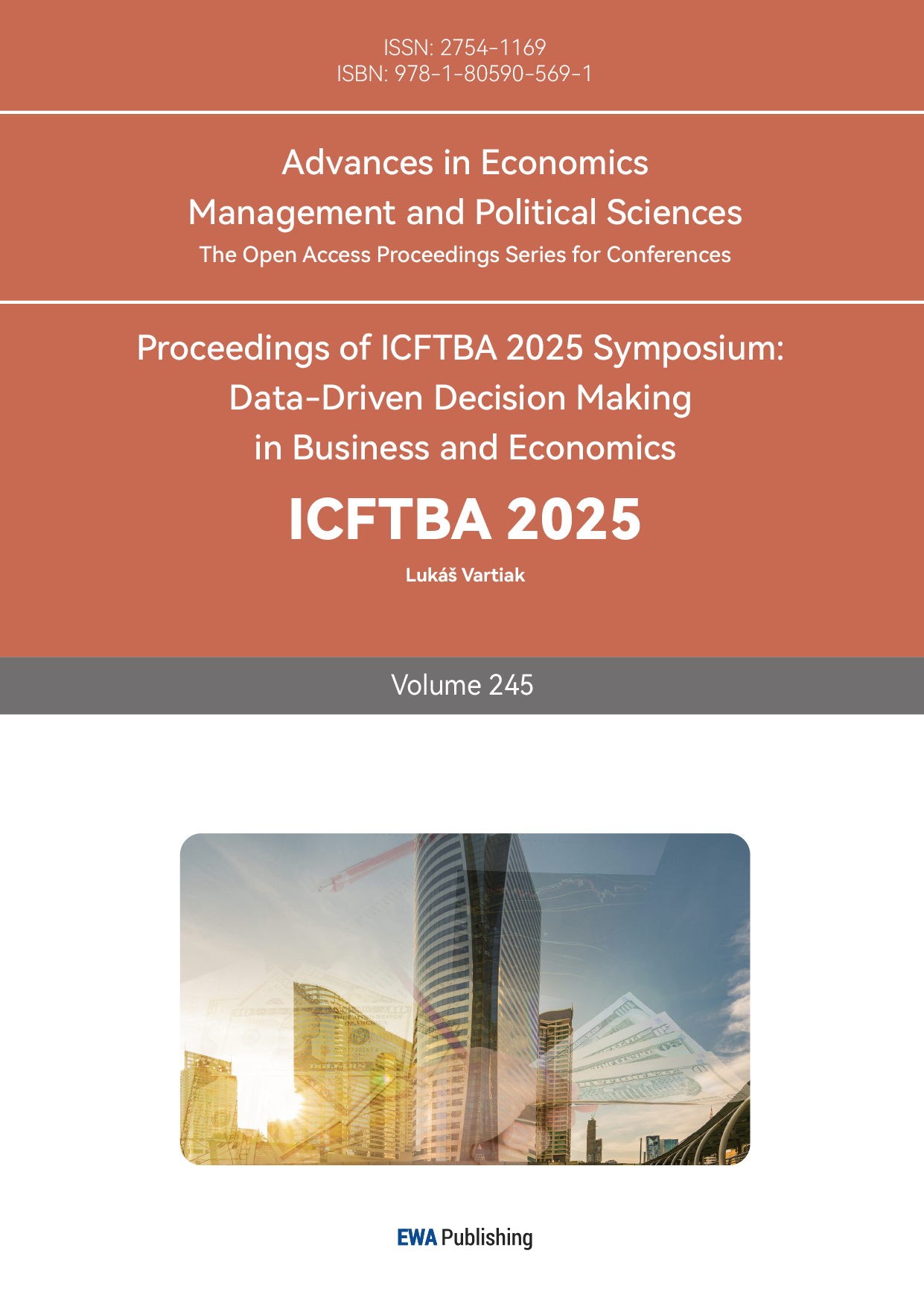References
[1]. Tian, J., & Zhang, L. (2024). Overview of Chinese new energy vehicle industry and policy developmet. Green Energy and Resources, 100075. https: //doi.org/10.1016/j.gerr.2024.100075
[2]. Zhang, T., Burke, P. J., & Wang, Q. (2024). Effectiveness of electric vehicle subsidies in China: A three-dimensional panel study. Resource and Energy Economics, 76, 101424. https: //doi.org/10.1016/j.reseneeco.2023.101424
[3]. Horwitz, J. (2021, March 30). Chinese smartphone maker Xiaomi to invest $10 billion in new EV unit over 10 years. Reuters. https: //www.reuters.com
[4]. Wu, S., & Mo, Y. (2024, March 29). Xiaomi takes aim at Tesla in Chinese auto market with $29, 870 electric car. Reuters. https: //www.reuters.com
[5]. Mao, T. (2025). Analysis of Xiaomi Auto’s marketing strategy. Advances in Economics, Management and Political Sciences, 186, 76–82. Atlantis Press. https: //doi.org/10.54254/2754-1169/2025.BL23677
[6]. Hu, X. (2025). Analysis of Xiaomi's Marketing Strategy. Advances in Economics, Management and Political Sciences, 158, 156-161. https: //direct.ewa.pub/proceedings/aemps/article/view/19765
[7]. Liang, Y., Zhou, Y., & Zhu, Z. (2023). The impact of Xiaomi’s marketing strategy on consumers’ purchase intention. BCP Business & Management, 38, 942–949. https: //doi.org/10.54691/bcpbm.v38i.3800
[8]. Xue, Y. (2025, March 18). Xiaomi CEO Lei Jun sees progress as firm lifts 2025 EV deliveries target by 16%. South China Morning Post. https: //www.scmp.com
[9]. Wang, Q., Fan, X., Fu, Z., & Wang, J. (2025). From smartphones to electric cars: A multidimensional analysis of Xiaomi’s brand extension and consumer perceptions. Journal of Strategic Marketing, 33(5), 685–706. https: //doi.org/10.1080/0965254X.2025.2520318
[10]. Ding, R., Chen, B., Wilson, J. M., Yan, Z., & Huang, Y. (2023). SRNI-CAR: A comprehensive dataset for analyzing the Chinese automotive market. arXiv preprint. https: //arxiv.org/abs/2401.05395
[11]. Business Wire. (2024, October 4). Xiaomi Auto’s first car a success, but shortcomings remain. Business Wire. https: //www.businesswire.com
[12]. Chen, Y., Dai, X., Fu, P., Luo, G., & Shi, P. (2024). A review of China's automotive industry policy: Recent developments and future trends. Journal of Traffic and Transportation Engineering (English Edition), 11(5), 867-895. https: //doi.org/10.1016/j.jtte.2024.09.001
[13]. Liu, L. (2024). Cross-market innovation: The dynamics of latecomer EV entrants. Journal of Technology Management & Innovation, 19(2), 85–101. https: //doi.org/10.1080/13602381.2024.2361281
[14]. Zheng, X. (2025). Analysis of New Energy Vehicle Marketing Strategy-Taking Xiaomi as an Example. In SHS Web of Conferences (Vol. 218, p. 01008). EDP Sciences. https: //doi.org/10.1051/shsconf/202521801008



